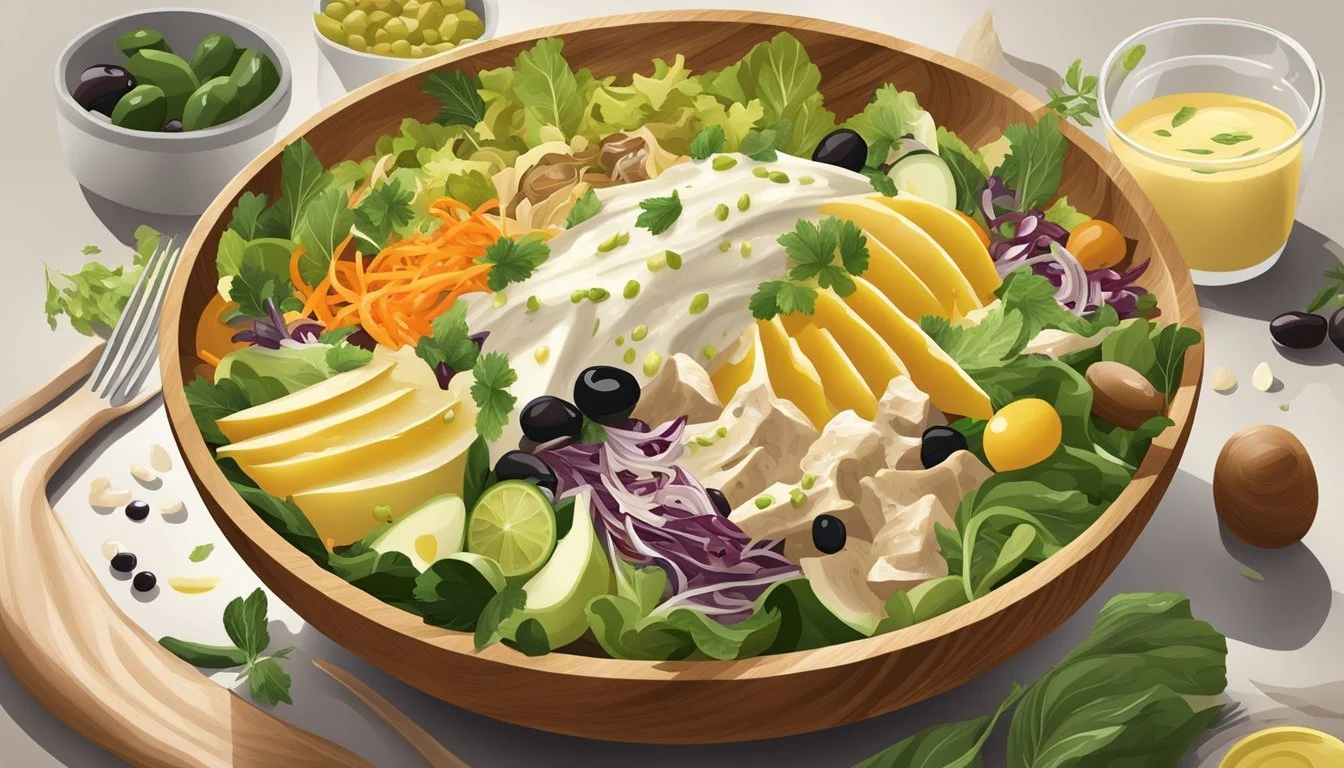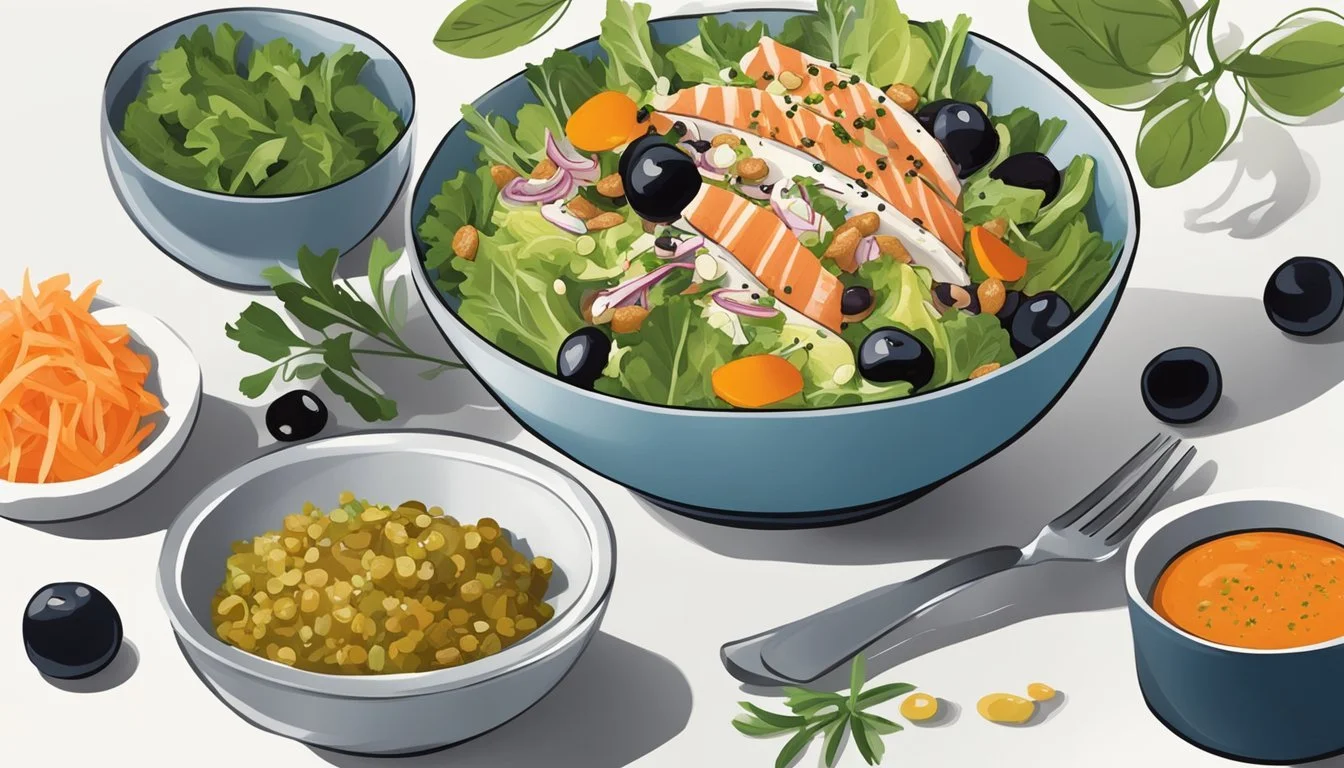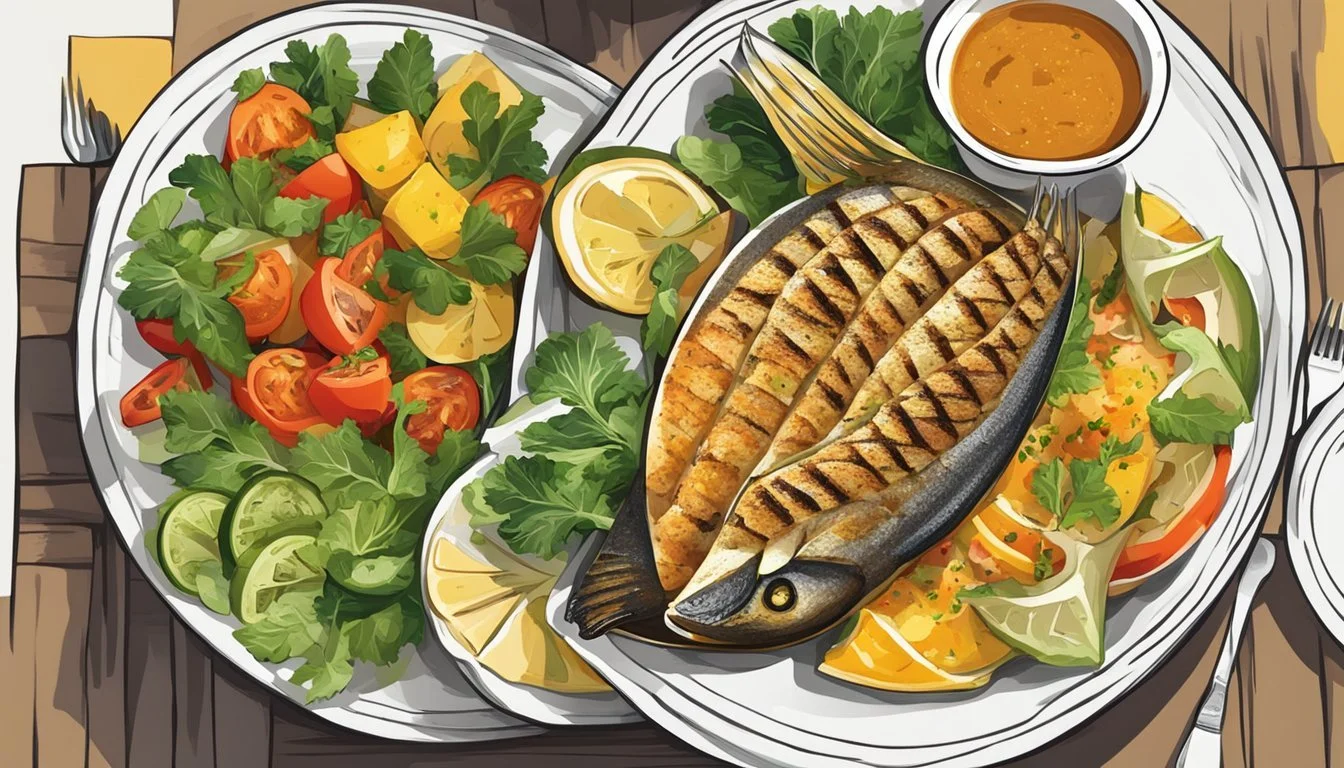How do you eat a xató
Mastering the Art of Catalan Salad Consumption
Xató is a distinctive Catalan salad renowned for its rich flavor combinations and revered position in regional cuisine. Originating from the coastal towns of Sitges and Vilanova i la Geltrú, this traditional dish perfectly embodies the essence of Catalan gastronomic culture. Typically enjoyed during local festivals and the arrival of new wine, it brings a celebratory note to the table.
At its core, xató consists of a bed of curly endive leaves, which set the stage for an array of robust ingredients including anchovies, (What wine goes well with anchovies?) tuna, and salted cod. These savory elements are complemented by the crunch of black olives, often adding a contrast of color and texture to the dish. The unique feature of xató, however, lies in its rich and nutty sauce, akin to the famous romesco, comprising almonds, hazelnuts, and the mild heat of nyora peppers.
To partake in xató is to experience a harmonious blend of flavors and textures. The salad is customarily served as a refreshing appetizer before heartier fare, or as a standalone dish that captures the spirit of Catalan festivities. Eating xató is more than just a meal; it's an indulgence in a time-honored culinary tradition that celebrates local produce and the joyous occasions that bring communities together.
Historical Background
Xató is deeply rooted in the culinary traditions of Catalonia, a region distinguished by its rich gastronomy and vibrant festivals. This salad embodies the mingling of heritage and hearty cuisine typical of the northeastern Spanish coastline.
Origin and Cultural Significance
The traditional Catalan salad known as Xató can be traced to the Garraf and Penedès regions of Catalonia, Spain. Esteemed for its robust flavor profile shaped by the coastal Mediterranean climate, its ingredients include a distinctive sauce made from almonds, hazelnuts, breadcrumbs, vinegar, garlic, olive oil, salt, and the regional nyora pepper. These components highlight Catalonia's affinity for utilizing local produce to create dishes that not only tantalize the palate but also reflect cultural identities. Xató is more than just a dish; it's a celebration of the local produce and communal culinary traditions that have been passed down through generations.
In the context of cultural significance, Xató is often associated with the celebration of social gatherings and festive occasions. The salad is not merely a culinary endeavor; it is a societal staple that has garnered esteem over the years in Catalonia's collective identity, revered both for its flavors and its embodiment of regional history.
Traditional Celebrations
Historically, Xató has been synonymous with the celebration of festivities, particularly during the winter months when fresh vegetables are scarcer. In coastal towns like Sitges and Vilanova i la Geltrú, the arrival of the new wine season is fervently celebrated. These towns form part of the "Xató Route," a gastronomic journey that celebrates this iconic dish alongside the effervescent spirit of local festivals.
In Vilanova i la Geltrú, the traditional festival known as "Carnaval de Vilanova i la Geltrú" showcases Xató as a central culinary highlight. Revelers partake in this salad, uniting the community under a shared tradition, further intertwining the dish within Catalonia's festive fabric. The synchronization with carnival season underscores Xató's role in communal festivity and its culinary representation of regional pride.
Xató is a mirror to the historical and cultural lifestyle of Catalonia, reflecting the community's passion for festivities, seasonal cycles, and the love for a cuisine that is intrinsically tied to its local customs and ingredients.
Ingredients Breakdown
The Catalan salad, known as Xató, presents a unique combination of flavors and textures. The salad's foundation is built upon a mix of traditional Mediterranean ingredients, segmented into two categories: the main components of the salad itself and the distinct elements that make up the Xató sauce.
Main Ingredients
Endive: A slightly bitter leafy green that serves as the base for this salad.
Desalted Cod: Flaked, this forms a key protein element in the dish.
Anchovies: Preserved in olive oil, they add briny depth to the salad.
Olives: Typically found as garnish, they provide a salty and often piquant touch.
Tuna: Occasionally included for added richness and texture.
Xató Sauce Components
Nuts: A mixture of almonds and hazelnuts gives the sauce body and a nutty base.
Bread: Toasted, it acts as a thickener and adds a toasty flavor to the sauce.
Tomato: Provides a fruity and acidic note.
Garlic: Offers a pungent kick to the mixture, used both raw and roasted.
Chiles or Peppers: Dried nyora peppers are traditional, contributing a sweet and slightly smoky flavor.
Vinegar: Sherry vinegar is most common, lending a crisp tartness.
Olive Oil: Brings everything together, forming a rich emulsion and adding a fruity profile.
Salt: Enhances all the flavors and seasons the sauce.
By using these components, one creates a harmonious balance of salty, sweet, smoky, and tangy elements typical of a Xató salad, making it a celebrated Catalan dish.
Preparing the Salad
In crafting a traditional Xató salad, one must focus on the freshness and preparation of the greens, the meticulous desalting of the cod, and the careful assembly of additional toppings.
Cleaning and Preparing Greens
The foundation of Xató begins with fresh greens—endive and curly endive (escarole) are essential. They should be thoroughly cleaned under cold water to remove any dirt. One should ensure that the leaves are dried completely, either by use of a salad spinner or by patting them down with a kitchen towel, to avoid watering down the dressing. The greens can then be torn or cut into bite-sized pieces, ready to absorb the flavorsome dressing.
Desalting the Cod
Salt cod must be prepared in advance due to its high salt content. It requires soaking in cold water for 24-48 hours, with the water changed approximately every six hours. The cod can then be steamed gently until it flakes easily. Once cooled, it can be flaked or shredded by hand, discarding any skin and bones.
Preparing Additional Toppings
The Xató salad is known for its well-balanced variety of toppings. Arbequina olives are a choice addition; they bring a rich, fruity flavor and should be pitted. Additional toppings include:
Peel and seed tomatoes, then dice them finely.
Steam tender veggies, such as asparagus or artichokes (What wine goes well with artichokes?), until just done to maintain a slight bite.
Finally, a liberal drizzle of high-quality olive oil enhances the overall taste and helps to bind the salad components together.
Making the Xató Sauce
The Xató sauce is a distinctive, nutty, and peppery accompaniment essential for the traditional Catalan Xató salad. Preparing it involves blending key ingredients to a specific consistency to enhance the overall flavor of the dish.
Combining the Ingredients
To create the foundation of the Xató sauce, one must gather ñora peppers, which provide a sweet and mildly spicy flavor. The sauce also requires roasted almonds and hazelnuts to impart a deep, nutty taste. One should include several cloves of garlic to add a pungent kick. Typically, a soaked piece of bread is included to thicken the sauce, while a ripe tomato contributes a tangy sweetness.
Ingredients:
ñora peppers, deseeded and soaked
A handful of almonds (toasted)
A smaller handful of hazelnuts (toasted)
3-4 garlic cloves, peeled
1 slice of bread, toasted until dry
2-3 tablespoons of sherry vinegar
1/2 cup of high-quality olive oil
These ingredients are traditionally blended to a coarse texture before proceeding to the next step.
Achieving the Right Consistency
After the initial ingredients are coarsely mixed, slowly drizzle olive oil while blending to achieve a smooth, emulsified consistency. The sauce should not be overly runny; it should possess enough body to cling to the salad leaves. Sherry vinegar is added for its notable sharpness, contrasting the rich flavors of the nuts and olive oil. The aim is to produce a sauce that's homogenous but retains slight textural character from the ground nuts.
For an authentic touch, some experienced cooks may add a pinch of paprika to imbue a touch of smokiness and enhance the sauce's deep red hue, ensuring that each element is perfectly balanced.
Assembling the Xató
When one prepares Xató, precision in layering the components, applying the dressing, and adding final touches ensures this Catalonian salad delivers its characteristic burst of flavors and textures.
Layering the Components
In the base of a large serving bowl, layer one head of escarole, previously washed and torn into bite-sized pieces. Next, add salted codfish, typically left to desalt overnight, then shredded into the bowl. Incorporate salted tuna, flaked, and distribute salted anchovies evenly. To finish, scatter a generous handful of Arbequina olives to introduce a fruity note.
Applying the Dressing
A vital element of Xató is its distinctive dressing known as Romesco. To create it, first prepare a thick purée by blending charred chiles, a roasted tomato, toasted almonds and hazelnuts, a piece of toasted bread, along with a few cloves of garlic. Once smooth, drizzle in high-quality olive oil while continuing to blend, achieving an emulsified consistency. Adjust the flavor with sherry vinegar and salt, to taste. When ready, the dressing should be generously spooned over the prepared salad, ensuring every component is lightly coated.
Final Touches
After the salad is dressed, it is customary to give it a gentle toss to ensure everything is well combined. As an optional touch, decorate with additional nuts or a sprinkle of chopped parsley for color contrast. The salad is then served immediately to enjoy the harmony of the salty fish, tangy dressing, and crisp greens. The Xató is not only a celebration of flavors but also a vibrant centerpiece for any table.
Serving Suggestions
When presenting xató, the focus is on blending traditional Catalan flavors with a variety of textures. This section guides you through the ideal accompaniments and presentation tips to make the most out of this distinctive salad.
Accompaniments
The xató salad pairs remarkably well with a range of side dishes that complement its rich flavors:
Artichokes: Whether grilled or marinated, artichokes make an excellent side that echoes the rustic nature of xató.
White Beans: Tender white beans serve as a mild, creamy counterpoint to the robust elements of the salad.
Toasted Bread: Providing a crunchy contrast, slices of toasted bread can be served on the side or incorporated directly into the salad for added texture.
Grilled Bread: Drizzling slices of bread with olive oil and grilling them will add a smoky note that harmonizes with the nutty romesco sauce often used in xató.
Presentation Tips
The visual appeal of xató is as important as its taste, and these tips will help ensure your salad is served with style:
Plating: Arrange the salad greens elegantly on the plate with the dressing modestly drizzled over them to accentuate the vibrant colors.
Garnishes: Strategically place your choice of accompaniments around the salad to create a visually enticing and balanced plate.
Sauce: If using romesco or a similar sauce, consider serving it on the side for guests to add to their liking, avoiding overdressing the salad.
Temperature: Serve the grilled or toasted bread warm to contrast the cool, crispiness of the greens in the xató.
Offering the salad with these accompaniments and attention to presentation elevates the dining experience to fully appreciate the unique flavors of xató.
Variations and Substitutions
When preparing xató, one can easily swap ingredients or alter the dressing to match personal preference or availability, while still honoring the rich flavors typical of this Catalan dish.
Ingredient Variations
In a traditional xató salad, tuna, anchovies, and olives are key components. For a variation in protein, one might replace tuna with shredded salted cod, or for a vegetarian option, omit the fish altogether. Anchovies can be substituted with pickled sardines, if desired. When focusing on olives, one may use any variety from Kalamata to Arbequina, depending on the desired taste profile.
Alternative Dressings
The typical xató dressing includes ñora peppers and romesco, a sauce made with a blend of nuts and red peppers. Here are acceptable substitutions for these ingredients:
Ñora Peppers: If unavailable, one might use mild paprika or another sweet, sun-dried pepper as an alternative.
Romesco: While traditional romesco uses almonds and hazelnuts, one might utilize other nuts like walnuts or even pine nuts in a pinch.
It is important to maintain the balance of flavors and textures when making substitutions to ensure the integrity of the dish remains intact.






